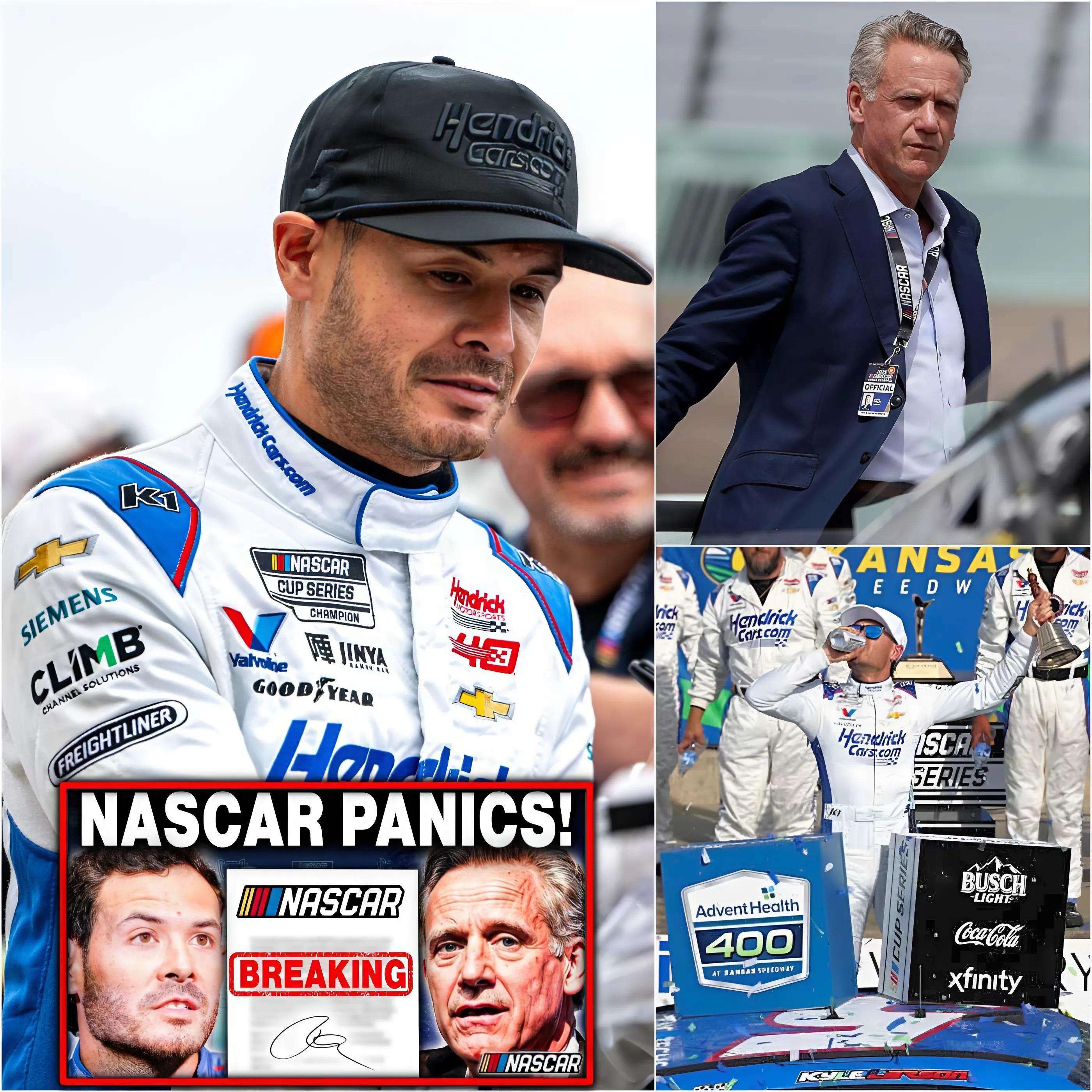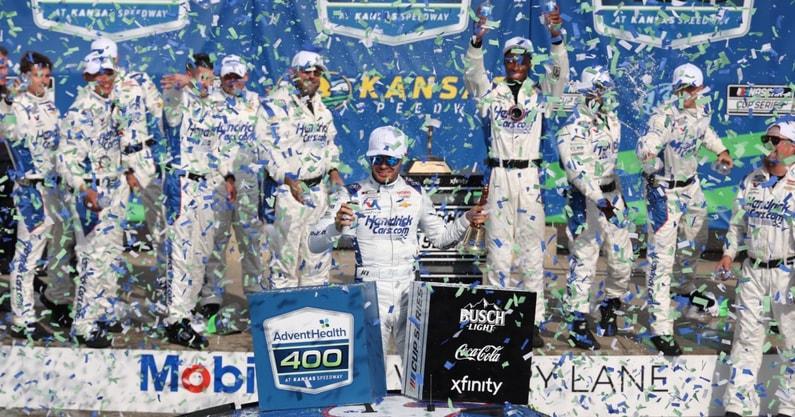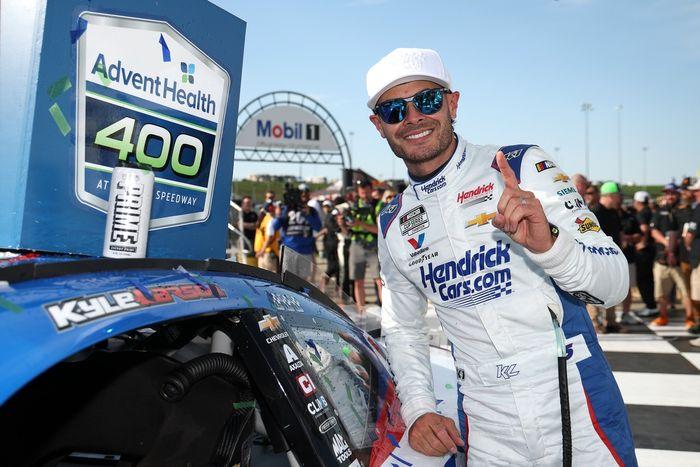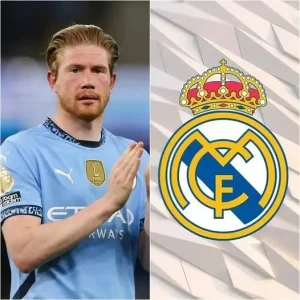Kyle Larson’s Kansas Dominance Sparks Debate on NASCAR’s Future
Kyle Larson’s commanding victory at the AdventHealth 400 at Kansas Speedway has sent shockwaves through the NASCAR community, reigniting discussions about the sport’s direction. The Hendrick Motorsports star led an astonishing 221 of 267 laps—82.7% of the race—marking the highest proportion of laps led at this track since its Cup Series debut in 2001. This flawless performance, which included pole position, stage wins, and a maximum 61 points, secured Larson his 32nd career win, tying him with NASCAR legend Dale Jarrett. Yet, beneath the triumph lies a troubling narrative for the sport, as Larson himself hinted at deeper issues plaguing NASCAR.

The Kansas race showcased Larson’s unparalleled talent and resilience, especially after a harrowing sprint car crash just days prior. His ability to rebound and dominate, as praised by Hendrick Motorsports VP Chad Kouse, underscores why fans and peers hail him as the “Greatest of All-Time.” However, the grandstands told a different story—half-empty despite the track’s reputation for thrilling, multi-lane racing fueled by its aged asphalt and progressive banking. This stark contrast to the sellout crowds of the 2000s and 2010s signals a growing challenge for NASCAR as it navigates the 2020s.

Larson’s post-race comments shifted focus from his personal success to NASCAR’s broader struggles. He acknowledged the track’s potential for exciting racing but pointed to a lack of local promotion and engagement, a symptom of the sport’s recent cuts to public relations teams. This lack of buzz, even on a high-profile weekend overshadowed by Mother’s Day and graduations, suggests NASCAR’s marketing efforts are falling short. Compounding this, demographic data reveals a disconnect: while the Cup Series outdrew the Formula 1 Miami Grand Prix in total viewership, F1 dominated the coveted 18-49 age group, where NASCAR lagged with under 20% representation.

As Larson prepares for his second attempt at the Indianapolis 500-Coca-Cola 600 double, his dominance raises concerns about race predictability. His Kansas win, though impressive, lacked the nail-biting drama of last year’s 0.001-second finish against Chris Buescher, hinting at a risk of monotony. Technical challenges, like tire wear and vibrations that sidelined drivers like Brad Keselowski, further highlighted ongoing car and equipment issues, though Kouse defended Goodyear’s product while noting teams’ aggressive limits-pushing.
Hendrick Motorsports’ cohesive strategy, with all four cars showing championship-caliber speed, contrasts with NASCAR’s wider struggles. Larson’s lead in the points standings by 34 over teammate William Byron, coupled with his history of success at upcoming tracks, positions him as a favorite for the All-Star Race. Yet, the question remains: can NASCAR recapture its audience and evolve, or will Larson’s brilliance inadvertently expose a sport at a crossroads? Fans are divided—some revel in his mastery, others fear stagnation. What’s your take on NASCAR’s future? Share your thoughts below!






